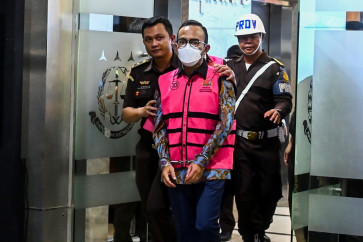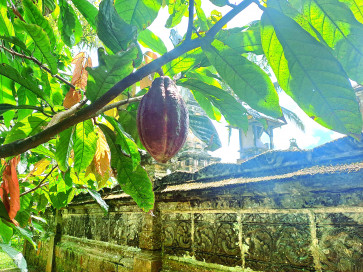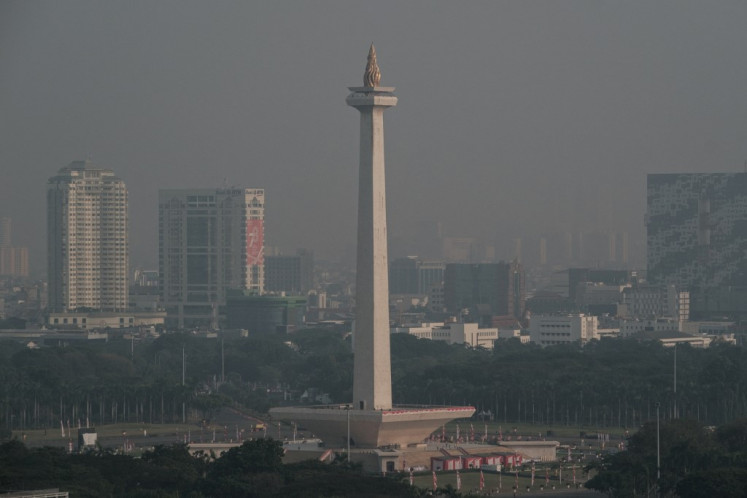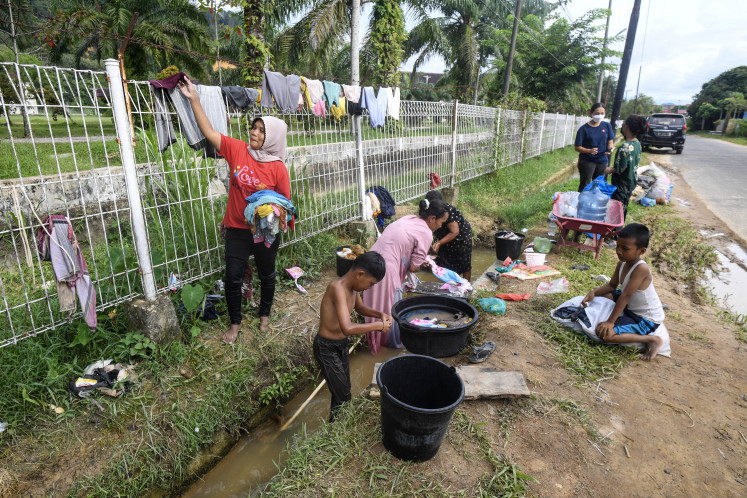Popular Reads
Top Results
Can't find what you're looking for?
View all search resultsPopular Reads
Top Results
Can't find what you're looking for?
View all search resultsMuseum conservation specialists step up
Observing the cultural and historical collections displayed in museums in Jakarta, we might wonder whom we should thank for conserving and restoring our legacy
Change text size
Gift Premium Articles
to Anyone
Observing the cultural and historical collections displayed in museums in Jakarta, we might wonder whom we should thank for conserving and restoring our legacy.
Unknown to the general public, the Conservation Institute -- established as the municipal conservation lab in 1997 -- has been handling conservation and restoration at the seven museums under within Jakarta's jurisdiction since 2002.
It certainly is not an easy task.
"We are overwhelmed with our work, especially because we are also responsible for the daily maintenance of the permanent collections.
"So many collections, too few staff and a limited budget," said Enny Prihantini, head of the institute.
There are about 40,000 items held by the city's seven museums, the Jakarta History Museum, the Maritime Museum, the Puppet Museum, the Ceramic and Fine Arts Museum, the Textile Museum, the Joang 45 Museum and the Prasasti Museum.
Enny said the institute employed 10 staff, only three of whom could rightly be called conservation specialists based on their training.
"It all started as just a duty that we had to take care of, but gradually I began to like conservation work," said 53-year-old Andia Sumarno, one of the three conservators. He started as the maintenance officer at the Textile Museum in 1989.
"I participated in trainings and study tours on conserving textiles and paintings," Andia said, adding he had gone through no formal education background in conservation before that.
Andia was involved in the recent joint venture between his office and the Tropenmuseum in Amsterdam to restore a 3-by-10-meter oil painting done by the late S. Sudjojono in 1974.
Enny said the specialists were all more than 40 years old and some were getting close to retirement.
"We urgently need new blood, it's true. But it's hard to find anyone interested in the field of conservation," said Enny, who acknowledged the last conservation training for her office staff was held back in 2005.
Until 2005,the institute had brought in artists from Yogyakarta and Bali with conservation experience to train staff as well as museum experts from Australia, the Netherlands and the United States.
The problem lay in the limited funds, she said.
This year the institute was allocated Rp 1.1 billion (US$120,879) for collection conservation, 60 percent of which has already been disbursed for conserving 40 items in the Maritime Museum, 75 in the Prasasti Museum and the Sudjojono oil painting in the Jakarta History Museum.
"We are still waiting for the disbursement of the remaining 40 percent of this year's budget to begin conserving three ancient 200-page books in the Jakarta History Museum rare books collection and another 40 items in the Textile Museum," Enny said.
She said each museum was registered for the conservation program at least once a year.
"However, this year, the Ceramic and Fine Arts, Puppet and the Joang 45 museums couldn't participate due to insufficient funds.
"Our priority is to restore damaged items. The museums should be handling their own regular maintenance, with our supervision. This is a never-ending job which we have to take care of together," she said.
The conservation staff work in different locations depending on the size of the item. A large painting will be repaired at the museum where it is kept. Smaller collections will be brought to the Conservation Institute's workshop and laboratory on Jl. Pintu Besar Utara in West Jakarta.
Enny estimated 15 to 20 percent of the 40,000 items in the seven municipal museums are estimated to suffer 30 to 40 percent damage on each item.
"That's why the museums need to contribute from their maintenance budget. Ideally, a museum sets aside 20 percent of its total budget to maintain its collection," said Enny, adding museums had only recently started to raise their maintenance allocation.
Enny said she regretted most museum management also lacked awareness about the importance of ongoing care.
"It's not that they don't know about conservation. We've held several trainings for them," said Enny, adding the latest was held in 2006.
"We really need their support to keep their collections in good condition. Once any item is restored, it still needs regular attention."










